Military fabric material is a kind of cloth that has been made specifically to withstand the harsh weather conditions of a military environment. It can be found in many different materials, with the most common being cotton, wool, and nylon. The main purpose of military fabric material is to provide protection against the elements and maintain warmth.
The Importance of Military Fabric Material
There are a variety of military fabric materials available on the market, each with its own set of benefits. It is important to select the right material for your needs in order to ensure optimal performance and protection.
The most common types of military fabric materials are cotton, nylon, and polyester. Cotton is a natural fiber that is breathable and comfortable to wear. Nylon is a synthetic fiber that is strong and durable. Polyester is a synthetic fiber that is wrinkle-resistant and quick-drying.
When selecting a military fabric material, it is important to consider the climate in which it will be used. For example, cotton is a good choice for hot climates as it helps to keep the body cool. Nylon is a better choice for cold climates as it provides insulation. Polyester is a good all-purpose fabric material that can be used in both hot and cold climates.
It is also important to consider the intended use of the fabric material when making your selection. For instance, if you need a fabric material that is resistant to water or fire, then nylon or polyester would be a better choice than cotton.
Finally, you should also consider the price of the fabric material when making your selection. Cotton and polyester are typically less expensive than nylon, but they may not offer the same level of protection or durability. When choosing a military fabric material, it is important to balance cost with performance in order to get the best value for your

Types of Military Fabric Material
There are a variety of different types of military fabric materials available on the market, each with its own unique set of benefits and drawbacks. Below, we’ll take a closer look at some of the most popular options to help you choose the best material for your needs.
One of the most popular types of military fabric is Kevlar. This synthetic fiber is incredibly strong and resistant to both abrasion and puncture wounds. Kevlar is often used in body armor and other protective gear, as it can effectively protect against bullets and other high-velocity projectiles. However, Kevlar is also quite expensive, making it less than ideal for use in mass-produced items such as clothing.
Another common type of military fabric is nylon. Nylon is much cheaper than Kevlar but still offers good resistance to abrasion and punctures. It’s often used in tents, packs, and other outdoor gear where durability is important but weight is less of a concern. However, nylon is not as effective at stopping bullets as Kevlar, so it’s not typically used in body armor applications.
Polyester is another popular choice for military fabrics. It’s strong and durable like nylon but has the added benefit of being cheaper to produce. Polyester is often used in things like sleeping bags and pack covers where cost is a major consideration. However, polyester isn’t quite as resistant to abrasion or punctures as either Kevlar or nylon, so it’s not the
Air Force Polyester Fabric
Polyester is a strong, synthetic fabric that can withstand a lot of wear and tear. It’s often used in military uniforms because it doesn’t wrinkle easily and it’s quick-drying. Polyester is also less likely to fade than other fabrics.
-
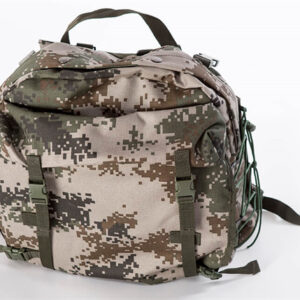 Military backpack Camouflage fabric manufacturer
Military backpack Camouflage fabric manufacturer -
 Military backpack material manufacturer
Military backpack material manufacturer -
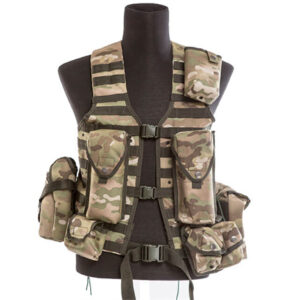 Multi functional combined suit Camouflage Fabric supplier
Multi functional combined suit Camouflage Fabric supplier -
 Camouflage handbag fabric manufacturer
Camouflage handbag fabric manufacturer -
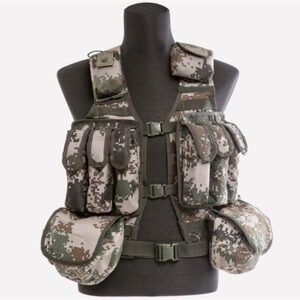 Multifunctional combined suit vest
Multifunctional combined suit vest -
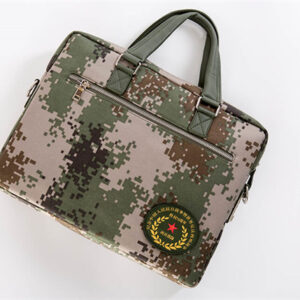 Camouflage briefcase material manufacturer
Camouflage briefcase material manufacturer -
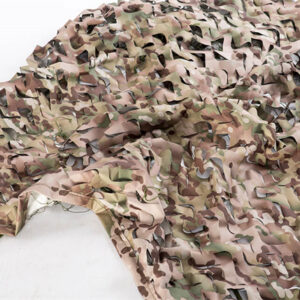 Radar net material manufacturer
Radar net material manufacturer -
 Flame Retardant Cut Resistant Vest material manufacturer
Flame Retardant Cut Resistant Vest material manufacturer -
 Air Force Camouflage Gear fabric
Air Force Camouflage Gear fabric
Navy COTTON Fabric
Navy COTTON fabric is one of the most popular materials used in military uniforms. It is durable, comfortable, and easy to care for. Cotton is a natural fiber that breathes well, making it ideal for hot weather conditions. It is also absorbent, so it can be used in wet conditions without compromising its strength or comfort.
Army POLYESTER, NYLON & ELASTANE Blend Fabric
If you’re looking for a fabric that’s durable, comfortable, and easy to care for, then a blend of polyester, nylon, and elastane is a great option. This fabric is often used in military uniforms because it meets all of the criteria listed above. Polyester is a strong synthetic fabric that’s resistant to wrinkles and fading. Nylon adds strength and elasticity to the fabric, while elastane provides stretch and flexibility. This fabric is also easy to care for – simply machine wash on a gentle cycle and tumble dry on low heat.
Coast Guard POLYESTER Fabric
There are a lot of different fabric materials on the market these days, and it can be hard to know which one is the best for your needs. If you’re looking for a fabric that is strong and durable, yet still has a soft feel, then polyester is a great option. Coast Guard polyester fabric is made of 100% polyester yarns and is perfect for making uniforms, tents, tarps, and more. This fabric is also mildew resistant and quick drying, making it ideal for use in humid or wet conditions.
Marines POLYESTER & NYLON Blend Fabric
If you’re looking for a durable and high-quality fabric for your military uniform, you can’t go wrong with a polyester and nylon blend. This type of fabric is often used in the construction of military tents and other outdoor gear, as it is resistant to both water and UV damage. Polyester and nylon blend fabrics are also quick-drying, making them ideal for use in humid or wet conditions.
Conclusion
There are a lot of different military fabric materials on the market, but not all of them are created equal. In this article, we’ve gone over eight of the best options available so that you can make an informed decision about which one is right for your needs. We hope that our list has helped you narrow down your choices and that you’ll be able to find the perfect material for your next project.



